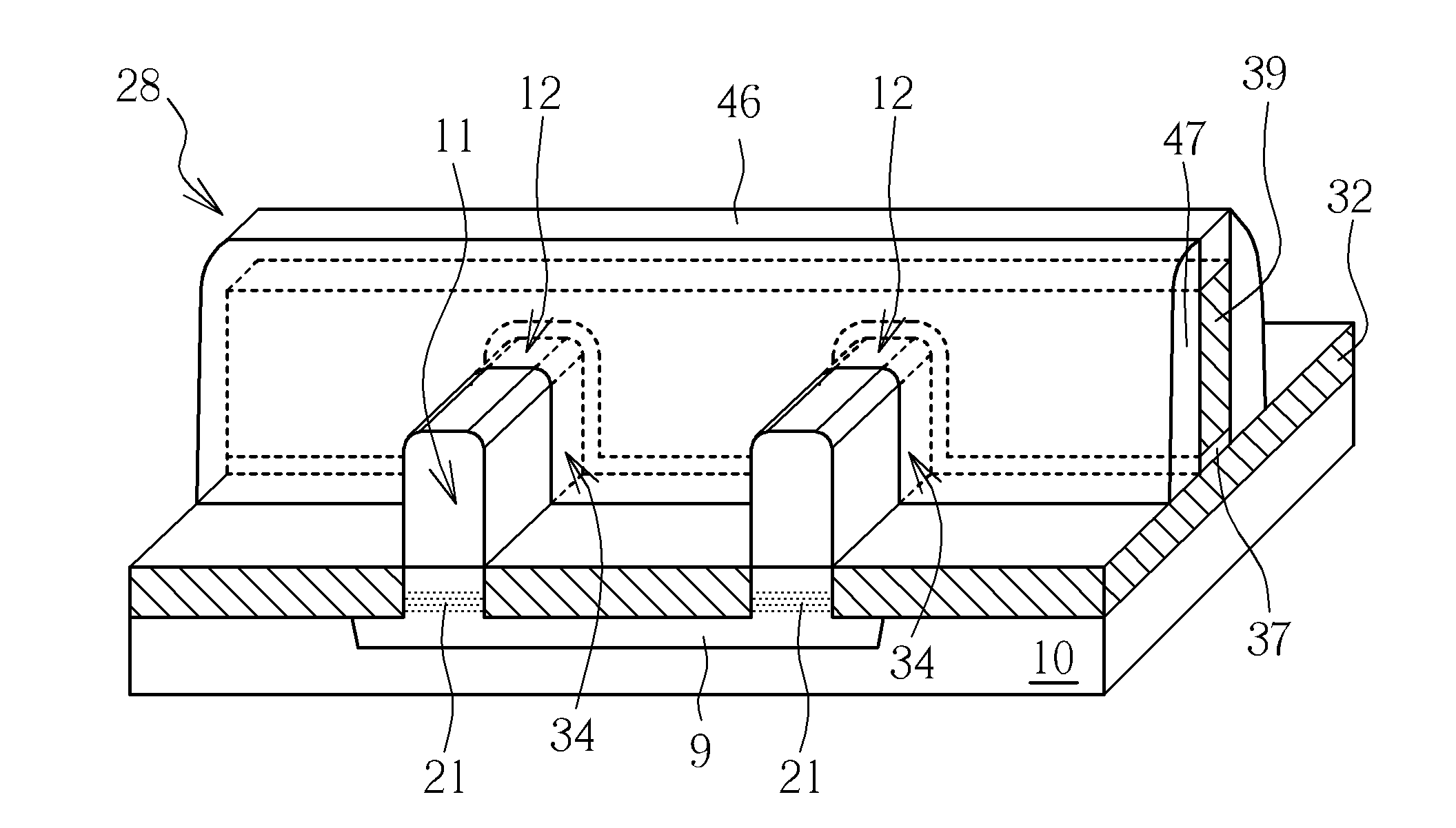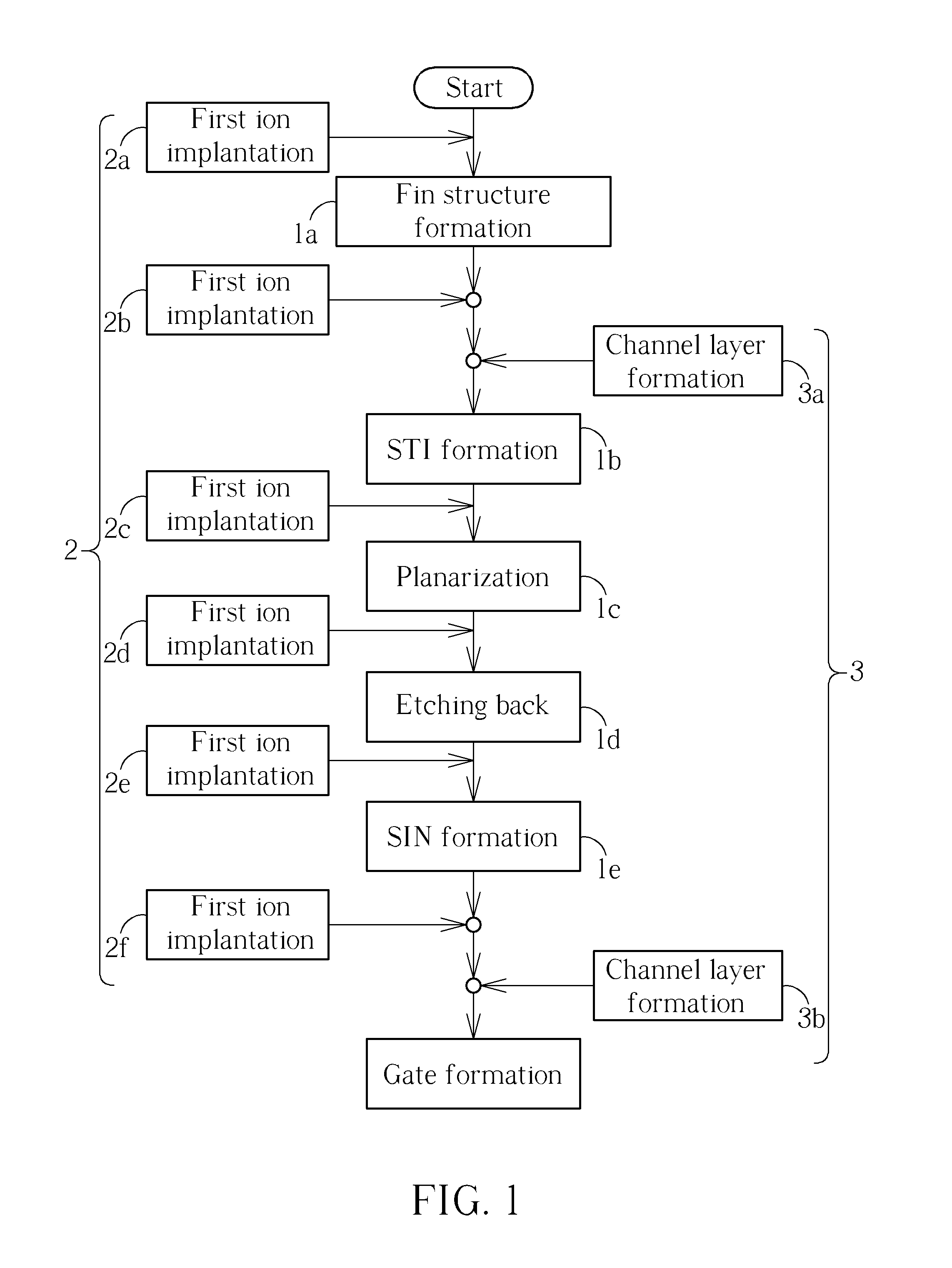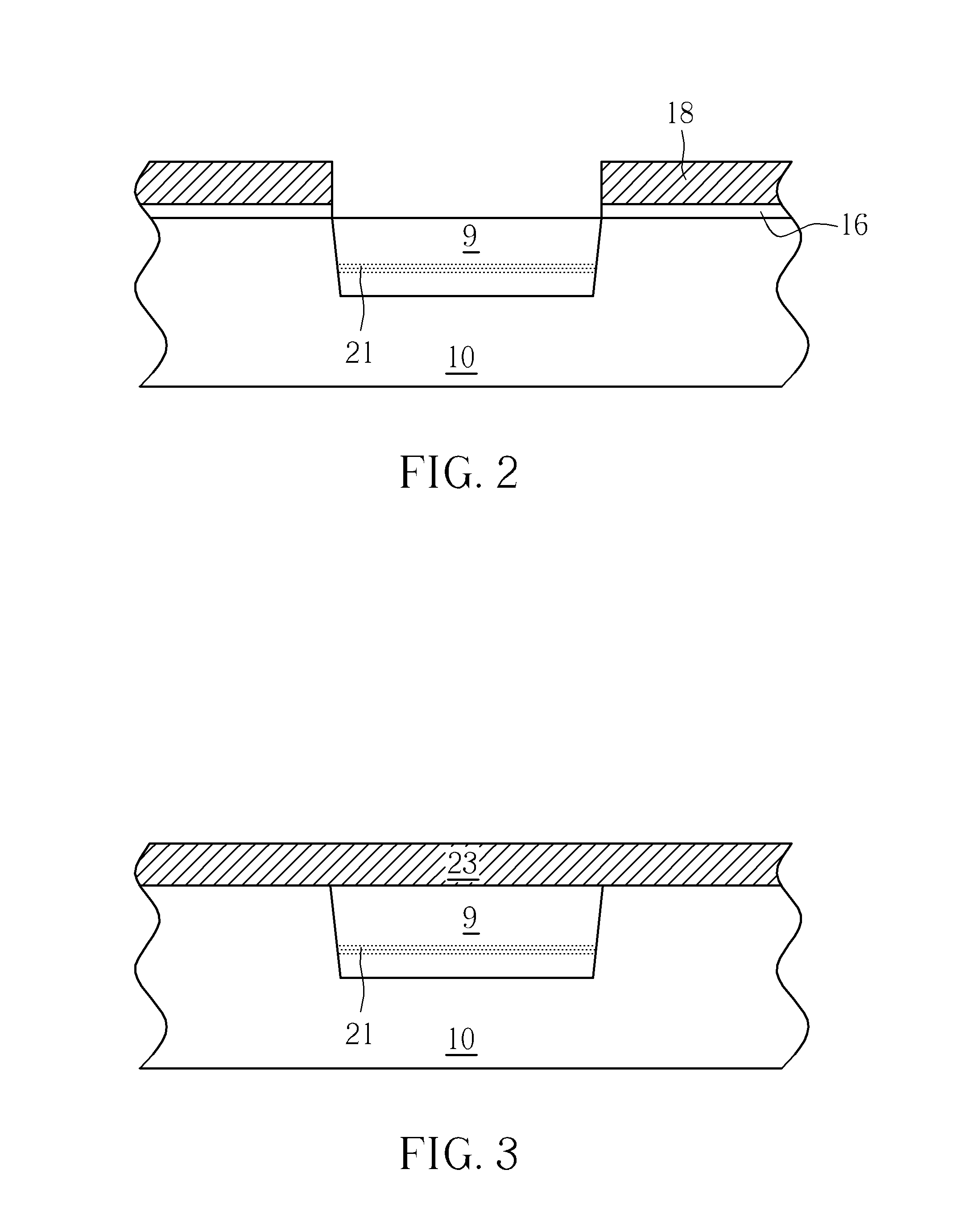Structure of field effect transistor with fin structure and fabricating method thereof
- Summary
- Abstract
- Description
- Claims
- Application Information
AI Technical Summary
Benefits of technology
Problems solved by technology
Method used
Image
Examples
first exemplary embodiment
The First Exemplary Embodiment
[0017]As illustrated in FIGS. 1-8, FIGS. 2-8 are schematic, cross-sectional view diagrams showing a method for fabricating a field effect transistor with fin structure according to the invention. In the first exemplary embodiment, the moment of performing the first ion implantation 2 is earlier than that of the fin structure forming 1a. As shown in FIG. 2, a substrate 10 covered with a patterned photoresist layer 18 is provided, wherein the patterned photoresist layer 18 is used to define the positions of an anti-punch doped region 21 and an ion well 9, that is to say, the anti-punch doped region 21 and the ion well 9 may be formed by using the same photomask. However, according to another embodiment, the ion well 9 and the anti-punch doped region 21 are fabricated by utilizing different photomasks. Next, an ion well 9 with a first conductivity type, e.g. P-type, is formed inside the substrate 10, wherein the ion well 9 has a first doping concentration,...
second exemplary embodiment
The Second Exemplary Embodiment
[0025]Please refer to FIG. 1 and FIGS. 3-8. The second exemplary embodiment is similar to the first exemplary embodiment and the main difference between them is that, in the second exemplary embodiment, the time of performing the first ion implantation 2 is at the time interval between fin structure formation 1a and STI formation 1b. Similar to FIG. 3, a substrate 10 covered with a semiconductor layer 23 is optionally provided and there is no anti-punch doped region in the substrate 10. Next, similar to FIG. 4, a second patterned mask layer 29 is formed on the semiconductor layer 23 to define the position of fin structure 11. By performing an etching process, at least a fin structure 11 is formed on the substrate 10 and is separated by a shallow trench 13. An etching process is performed to form at least a fin structure 11 on the substrate 10 while each fin structure 11 is separated by a shallow trench 13. Next, a first ion implantation 2 is carried ou...
third exemplary embodiment
The Third Exemplary Embodiment
[0026]Please refer to FIG. 1 and FIGS. 3-8. The third exemplary embodiment is similar to the second exemplary embodiment and the main difference between them is that, in the third exemplary embodiment, the time of performing the first ion implantation 2 is at the time interval between STI formation 1b and the planarization 1c process. Similar to FIG. 3, a substrate 10 covered with a semiconductor layer 23 is provided and there is no anti-punch doped region in the substrate 10. Next, similar to FIGS. 3-4, at least a fin structure 11 is formed on the substrate 10 and is separated by a shallow trench 13. An etching process is performed to form at least a fin structure 11 on the substrate 10 while each fin structure 11 is separated by a shallow trench 13. Subsequently, as illustrated in FIG. 5, through a high density plasma CVD (HPCVD) process, a sub atmosphere CVD (SACVD) process or a spin on dielectric (SOD) process, an insulation layer 31 covering the fi...
PUM
 Login to View More
Login to View More Abstract
Description
Claims
Application Information
 Login to View More
Login to View More - Generate Ideas
- Intellectual Property
- Life Sciences
- Materials
- Tech Scout
- Unparalleled Data Quality
- Higher Quality Content
- 60% Fewer Hallucinations
Browse by: Latest US Patents, China's latest patents, Technical Efficacy Thesaurus, Application Domain, Technology Topic, Popular Technical Reports.
© 2025 PatSnap. All rights reserved.Legal|Privacy policy|Modern Slavery Act Transparency Statement|Sitemap|About US| Contact US: help@patsnap.com



